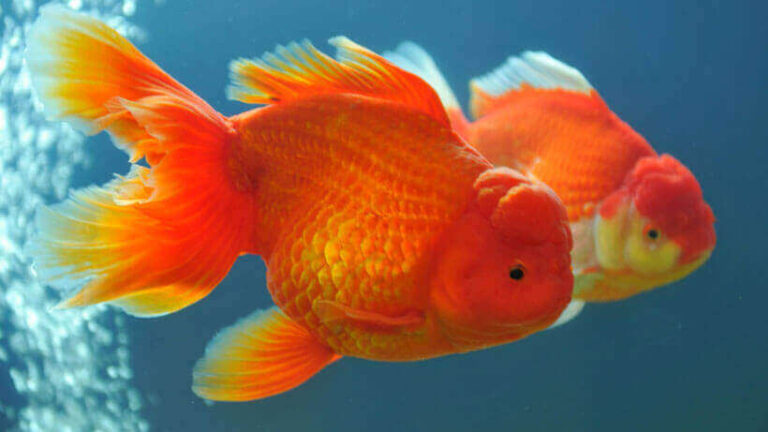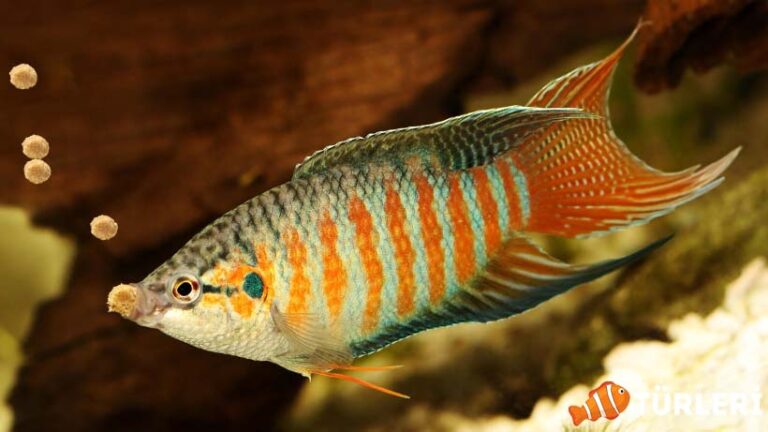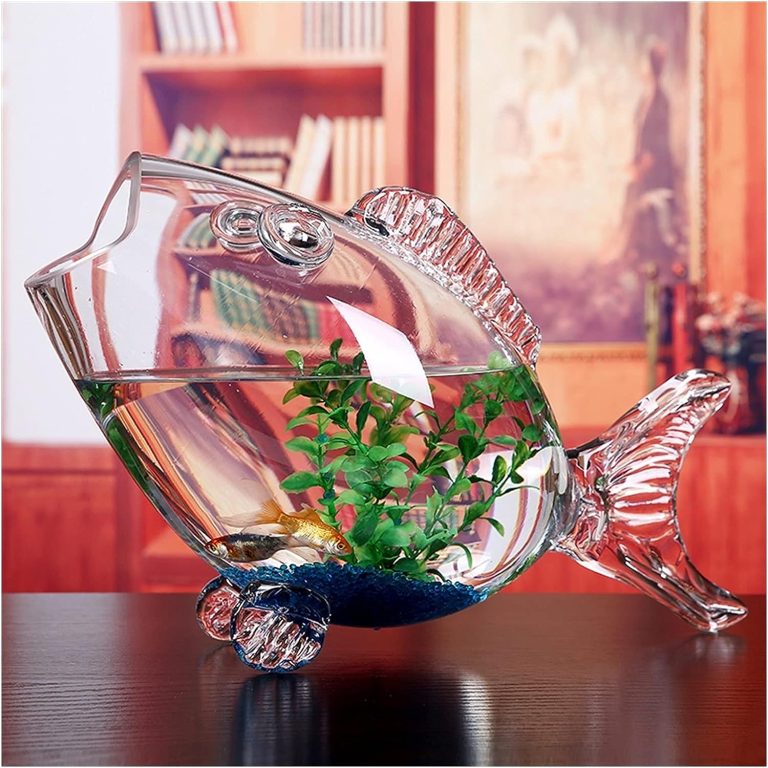Red Claw Crab
Red Claw Crabs, also known as Perisesarma bidens, are a popular species of freshwater crab that are commonly kept as pets in aquariums. They are named after their distinct red claws and are known for their colorful appearance and active behavior. Here is a comprehensive guide to the care, tank setup, diet, and more for Red Claw Crabs.
Red Claw Crab Species Summary:
| Scientific Name: | Perisesarma bidens |
| Origin: | Mangrove swamps of Asia (Taiwan, Malaysia, Indonesia) |
| Diet: | Omnivore (eats both plant and animal matter, needs calcium for shell development) |
| Behavior: | Territorial and aggressive |
| Behavior Towards Their Own Species: | Can be aggressive, plenty of hiding spots should be provided. |
| Swimming Zone: | Bottom |
| Water Temperature: | 24 – 29 °C |
| Water Hardness: | 6 – 15 GH |
| pH Level: | 7.5 – 8.5 |
| Minimum Aquarium Volume: | 80 Liters (for one or two crabs, larger for more) |
| Adult Size: | 5-6.5 cm (carapace), up to 10 cm including legs |
| Reproduction: | Eggs carried by female under abdomen, larvae need specific conditions to survive. |
| Lifespan: | 5 – 10 years (with proper care) |
| Care: | Moderate, requires a brackish water setup, regular cleaning, and sufficient hiding spaces. |
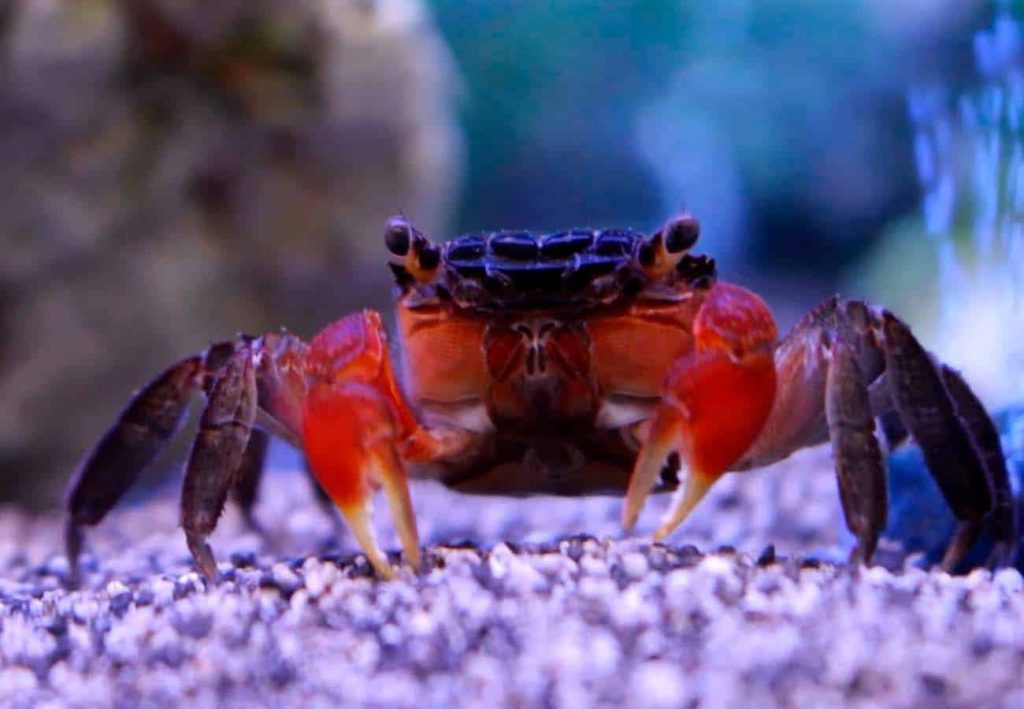
Habitat
Red Claw Crabs are originally from the mangrove swamps of Asia, specifically in regions like Taiwan, Malaysia, and Indonesia. They are semi-aquatic creatures, meaning they require both land and water in their habitat.
Tank Setup
- Tank Size: A 20-gallon tank is the minimum recommended size for one or two crabs. If you plan on keeping more, you will need a bigger tank.
- Substrate: Use a mixture of sand and coconut fiber as the substrate. This will allow the crabs to dig and burrow, which is a natural behavior for them.
- Land and Water Areas: Create both land and water areas in the tank. About 50% of the tank should be land, and the other 50% should be water. The water should be around 4-6 inches (10-15 cm) deep.
- Water Quality: The water should be slightly brackish (a mixture of fresh and saltwater) with a specific gravity of 1.005 to 1.010. Use marine salt mix to create brackish water. The pH should be between 7.5 and 8.5.
- Filtration: Use a filter that is suitable for the size of your tank. This will help to keep the water clean and well-oxygenated.
- Heating: Maintain the water temperature between 75-85°F (24-29°C).
- Decoration: Provide plenty of hiding spots using rocks, driftwood, and plants. Make sure to use plants that can tolerate brackish water, such as Java Fern or Anubias.
- Lighting: Moderate lighting is suitable for Red Claw Crabs. They do not have any special lighting requirements.

Diet
Red Claw Crabs are omnivores, meaning they eat both plant and animal matter. Their diet should consist of a variety of foods such as:
- Commercial Foods: Crab pellets or sinking pellets that are specially formulated for crustaceans.
- Vegetables: Offer blanched vegetables like spinach, zucchini, and peas.
- Protein: Provide protein in the form of frozen or live foods like brine shrimp, bloodworms, and daphnia.
- Occasional Treats: Small pieces of fish or shrimp can be given as occasional treats.
Behavior and Compatibility
- Territorial: Red Claw Crabs are known to be territorial and can be aggressive towards each other and other tank inhabitants. It is recommended to provide plenty of hiding spots to minimize aggression.
- Compatibility: It is best to keep them in a species-specific tank as they may not be compatible with other aquatic creatures due to their aggressive nature.
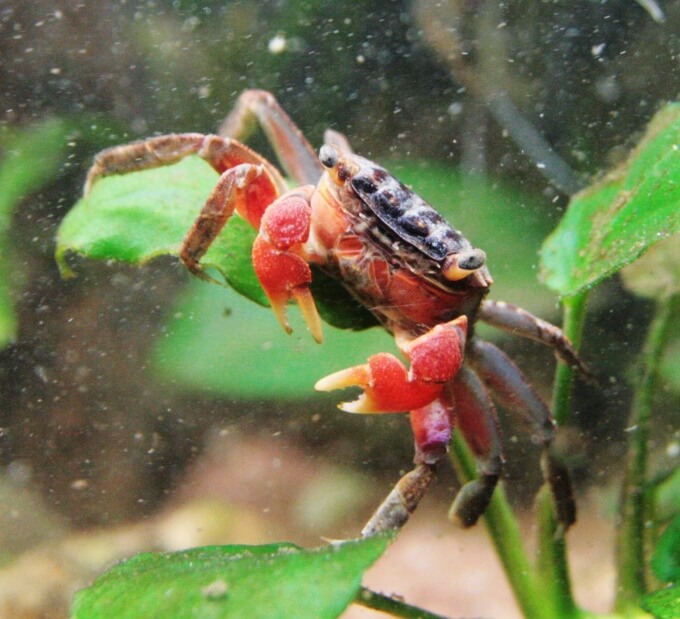
Breeding
Breeding Red Claw Crabs in captivity can be challenging as the larvae require specific conditions to survive. The female carries the eggs underneath her abdomen until they hatch. The larvae are then released into the water and go through several stages of development before becoming juvenile crabs. It is recommended to have a separate breeding tank with optimal conditions for the larvae to increase their chances of survival.
Common Health Issues
- Molting: Molting is a natural process that Red Claw Crabs go through as they grow. During this time, they will shed their exoskeleton and grow a new one. It is important to provide them with plenty of calcium in their diet to support healthy shell development.
- Shell Rot: Shell rot is a fungal infection that can occur if the water quality is poor. It is important to maintain good water quality and to remove any uneaten food or debris from the tank regularly.
Tips for Success
- Regular Water Changes: Perform regular water changes to maintain good water quality. Change about 20-25% of the water every two weeks.
- Proper Diet: Provide a balanced diet that includes a variety of foods to meet all their nutritional needs.
- Hiding Spots: Provide plenty of hiding spots to minimize stress and aggression.
By providing the proper care and environment, Red Claw Crabs can thrive and live a healthy and happy life in your aquarium.


